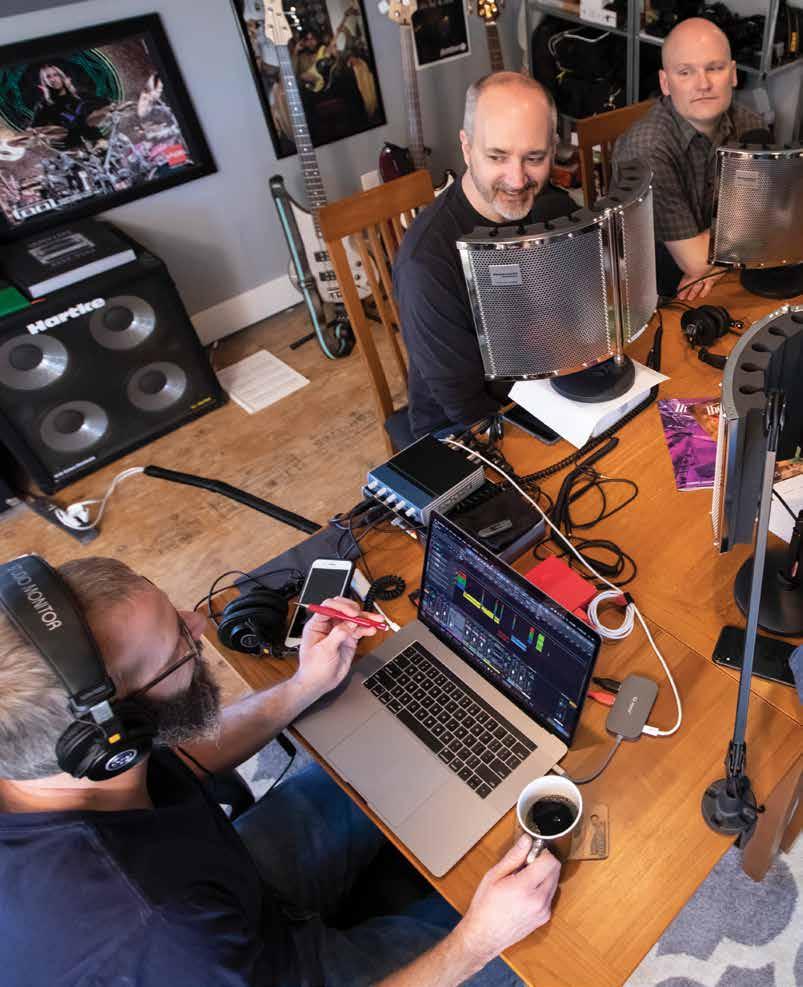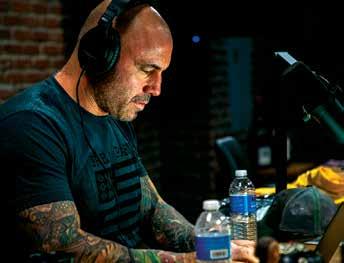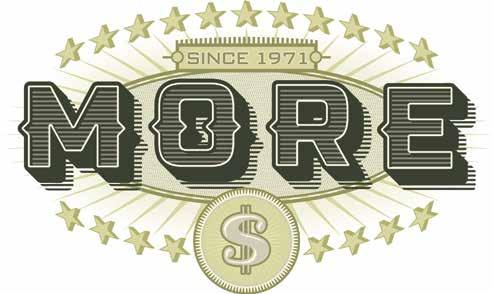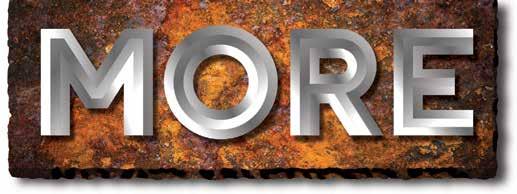
11 minute read
Rebounding Like a Bullet
BY SETH RESLER
Behind the scenes at John Deere's podcast, "On Life and Land"
Defying the laws of economic gravity, podcasts are on a growth spurt. There are ways to build a meaningful business in the space.
WHILE THE COVID-19 PANdemic is taking a significant toll on many sectors within the media industry, the podcasting space is proving to be surprisingly resilient. In April, the number of titles available in Apple Podcasts surpassed 1 million. Other companies have taken note. While Apple Podcasts is still the largest podcast directory, streaming services like Spotify, Pandora and TuneIn have embraced podcasts in recent years. In September, Amazon Music became the latest player to feature podcasts on its platform.
What’s more, the IAB (Interactive Advertising Bureau) released a report this past summer stating that in 2019, the medium saw an estimated 48% year-over-year revenue growth, for a total market estimate of $708.1 million. And despite the COVID-19 pandemic, the IAB expects the podcasting industry to cross the $1 billion mark next year. According to a recent report from Westwood One and Magellan AI, after a slight dip in the number of unique podcast advertisers in April, the industry rebounded and has seen a 10% increase year-to-date.
In other words, podcast production is up; podcast listening is up; and podcast revenue is up even as the rest of the world is upside down.
How can media companies get in on the action? Or if they’re already involved in podcasting, how can they do more?
There are two revenue-opportunity “doors” to choose from. Companies can make a play on the content side or the tech side – or choose to do both. Going the content route involves the creation of podcasts themselves. Media companies like National Public Radio (NPR), Nerdist and Wondery are examples of content players.
The tech side, on the other hand, involves building the technology that supports either podcasters or podcast listeners. Art-19, Blubrry and PocketCasts are among the tech companies in that arena.
Some players have a foot on both sides of the podcast business. This often involves the creation of exclusive content and an app for delivering it, similar to what Netflix, Disney+ and CBS All Access are doing in the television space. As Spotify has grown its presence in podcasting, it has acquired both Gimlet, a content company, and Anchor, a tech company. Other players are following suit.
The road traveled by Slate gives an idea of how a podcast strategy can evolve. Its foray into podcasting was initially a content play, spearheaded by Andy Bowers, a former NPR journalist. This grew into Panoply Media, which acquired ad-insertion and podcast-hosting technology, which it then offered to other podcasters. Eventually, Panoply split its technology company off from Slate and rebranded itself as Megaphone.
CONTENT MODELS
For podcast producers, there are a number of different revenue models in a burgeoning medium that is still finding its footing.
First and foremost, there’s the traditional ad-supported approach, akin to radio or television. However, most podcast ads are host-read, rather than 30- or 60-second produced spots.
According to the IAB, about half of podcast ads are “baked in” – recorded and uploaded at the same time the show is produced. The other half are dynamically inserted into the show when the listener downloads the file to a listening device. In this way, someone who listens to a podcast episode today will hear different ads than someone who listens six months from now. Similarly, a listener in Chicago might hear a different ad than a podcast consumer in Miami.
Podcast ads are typically sold on the basis of CPM (cost-per-thousand) impressions. They can cost between $18 and $50 per CPM, depending on the popularity of the podcast, the length of the ad and its position (pre-roll, mid-roll, post-roll) within an episode.
According to the IAB’s Podcast Ad Revenue Study released in July 2020, over half of all podcast advertising revenue comes from direct
response ads, in which podcasters often encourage their listeners to go to a unique URL or use an exclusive code when purchasing as a means of attributing the sale to a particular podcast.
As with radio, attribution can present a challenge for advertisers who focus on ROI (return on investment) metrics. Although startup companies (like Chartable), which use IP addresses to match purchases to podcast listeners, are tackling the issue.
Podcasts are measured by the number of downloads an episode receives in its first 30 days after being published. Rob Walch, vice president of podcaster relations at Libsyn, the industry’s largest podcast hosting company, points out that as a rule of thumb, advertisers become interested when shows earn at least 5,000 downloads per episode.
That’s a high bar for most podcasts. In May of this year, only 6.3% of new podcast episodes hosted on Libsyn’s platform had crossed it.
Over the last several years, as more advertisers have turned their attention to podcasts, the medium’s metrics have attracted increased scrutiny. Unlike the broadcast radio and television industries, in which a dominant third-party company like Nielsen publishes audience metrics, podcast statistics are provided to each podcaster by their hosting company. (A handful of companies produce charts, but most require the podcast producers to opt in, and none dominate the measurement space in the same way that Nielsen does.)
This raises an important question: how do we know what constitutes a download? Is a podcast download on a show hosted by Blubrrry the same as one hosted on Art 19?
The IAB has assembled key players in the industry to build consensus around these metrics, and it’s published technical guidelines.
Additionally, a download does not necessarily mean a consumer has actually listened to an episode – all or part. This is another area where for media mavens, podcast metrics fall short.
PREMIUM CONTENT
While advertising is the largest revenue stream in the space, it is not the only one. Many podcasters are placing premium content behind a paywall to generate income. For example, comedian Marc Maron hosts his popular “WTF” podcast, in which he interviews comedians, musicians and other celebrities. The most recent episodes are available for free. But in order to listen to interviews older than six months (including great conversations with the likes Robin William, Will Ferrell and Barack Obama), you must sign up for a subscription. Slate takes a different approach to premium content with their Slate Plus program. Subscribers to the program get ad-free versions of their podcasts, which also include exclusive bonus segments. As you might expect, companies that offer premium content are hoping to become the “Netflix of podcasts,” an attractive but lofty ambition. The startup company Luminary raised $100 million in initial venture capital with this goal in mind. Luminary built a “podcatcher” (an app created for listening to podcasts) that includes thousands of free podcasts in its directory. The company then enticed high-profile podcasters such as Trevor Noah and public radio’s Guy Raz to create exclusive content, and it uses this app to upsell listeners by encouraging them to subscribe to these shows.
However, Luminary has struggled to turn a profit. In May, Bloomberg reported that despite these efforts, the company has only signed up 80,000 subscribers, generating less than $500,000 in monthly revenue – despite spending more than $4 million each month.
Meanwhile, Spotify is increasing its investment in exclusive podcasts. For example, earlier this year it purchased licensing rights to the highly popular “The Joe Rogan Experience” for more than $100 million. (There reportedly has been pushback from Spotify employees who expressed concern over Rogan’s transphobic content, and the platform removed some of Rogan’s shows with right-wing figures.) The strategy of owning popular content can have a big payback, if it not only entices more consumers to download the Spotify app but also converts them to paying subscribers.
Moreover, if Spotify can shift a significant amount of its users’ listening to content that it owns, rather than music owned by record labels and their artists, it could dramatically decrease the amount of money it pays for royalties, thus changing their business model to
LITTLE ENGINES THAT COULD?
PODCASTS HAVE EXPENDED their revenue opportunities beyond recorded shows. Prior to the pandemic, more and more podcasts took to the road for live performances, in much the same way that musical artists rely on concerts and merchandizing to support their brands.
In podcasting, this model has yielded impressive successes. Fans around the country have lined up to see a live recording of the popular podcast “My Favorite Murder” or director Kevin Smith’s “SModcast.”
The podcast touring model, however, is more embryonic – not yet as established as the tried-and-true circuit for musical artists or stand-up comedians. The concept for podcasts was still in its infancy when live events ground to a near halt with the pandemic.
The sale of merchandise, such as clothing or stickers, presents yet another albeit smaller source of revenue for podcasters attempting to build their foundation of fans.
Continued on page 14

Nearly five decades of practicing the intimate ins and outs of the media collections business have taught us a thing or two. Things like when to be strong and when to be gently persuasive. or how to use our proprietary database DebtorNet® to give us and you invaluable insights and help with credit decisions.

and now there’s even more!

We’ve helped hundreds of businesses collect more debt by working with them to collect older ARs, and—in response to growing client requests— we offer even moRe services by working as an in-house collections department for you.
This means we can collect moRe of your money moRe quickly. outgoing calls and emails are identified from your company so there’s complete transparency. We provide expertise in credit-sales coordination, credit investigation, contracts, and adapt quickly to your internal policies.
our in-depth knowledge of industry traffic and accounting platforms lets us ramp up quickly when working as your in-house team. Long-tenured staff members bring moRe knowledge, moRe skill, and moRe experience than any other media collections business, helping you retain important accounts you built.
We stand with you to collect moRe of what’s owed. After all, it’s your money, and you deserve to collect more of it. Let us show you how.
Szabo Associates, Inc. 404-266-2464 www.szabo.com info@szabo.com
PODCASTS—Continued from page 12 a more attractive format, making its investors happy.
Increasingly, podcasts have become an incubator for Hollywood. Hit podcasts like “Dirty John,” “Lore” and “2 Dope Queens” have been developed into television shows. The adaption of popular on-demand audio shows into a reliable podcast-to-screen pipeline could prove to be an area of revenue growth for the movie and television businesses of all types.
Of course, sometimes the pipeline flows in reverse: Spotify recently inked a deal with Warner Brothers to produce podcasts based on DC Comics characters.
ADVERTISERS JUMP IN
Podcasts can be such a powerful marketing tool that many independent producers generate revenue not just through ads, but by using their shows as a vehicle to promote a product or service. For example, a real estate agency or a local law partnership might launch a podcast to help spread the word about their services and attract potential clients.
Increasingly, larger companies are also producing branded podcasts as a way of engaging with their customers and loyal fans. John Deere, Trader Joe’s, Basecamp and Blue Apron are among the growing list of companies producing branded podcasts as part of their total marketing efforts.
These brands often hire outside firms to
produce the podcasts, opening up a new revenue stream in the podcasting space. Podcast producers are paid a per-project fee that does not depend on downloads the way that an ad-driven show does.
The production of branded podcasts can be executed by many different types of firms. Some, like Canada’s Pacific Content, specialize in podcast production. Traditional radio or television companies, including iHeartMedia, are increasingly offering podcast production services as well. They can also be offered as an additional service by video production houses, digital marketing companies or even public relations firms skilled in the creation of on-demand audio.
The branded shows can serve purposes beyond just marketing. For example, large corporations are increasingly using podcasts for internal communications: to train new hires; roll out new products internally; or give management a platform to communicate their vision to the staff and prospective employees. Podcasts can also be used as ongoing customer support tools, or for educational purposes.
As your company looks to enter into or expand its offerings in the world of podcasting, consider the full range of revenue streams. They can round out a portfolio, offering unique content that is reflective of a media company’s brand and what it stands for.
Seth Resler is the digital strategist for Jacobs Media, a consulting firm that represents radio, TV and digital media. He can be reached at (248) 353-9030 or seth@jacobsmedia.com.
FIND GAME CHANGING MEDIA TALENT

STREAMLINE YOUR NEXT JOB SEARCH FOR EXPERIENCED AND TECH-SAVVY MEDIA PROFESSIONALS WITH A HIGHLY VISIBLE JOB POST ON TVNEWSCHECK. Visit MediaJobCenter.com
From NewsCheckMedia





